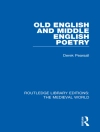Sonnets by William Shakespeare William Shakespeare (1564–1616) wrote sonnets on a variety of themes. When discussing or referring to Shakespeare’s sonnets, it is almost always a reference to the 154 sonnets that were first published all together in a quarto in 1609.
However, there are six additional sonnets that Shakespeare wrote and included in the plays
Romeo and Juliet,
Henry V and
Love’s Labour’s Lost. There is also a partial sonnet found in the play
Edward III.
Shakespeare’s sonnets are considered a continuation of the sonnet tradition that swept through the Renaissance from Petrarch in 14th-century Italy and was finally introduced in 16th-century England by Thomas Wyatt and was given its rhyming metre and division into quatrains by Henry Howard.
With few exceptions, Shakespeare’s sonnets observe the stylistic form of the English sonnet—the rhyme scheme, the 14 lines, and the metre. But Shakespeare’s sonnets introduce such significant departures of content that they seem to be rebelling against well-worn 200-year-old traditions.
Instead of expressing worshipful love for an almost goddess-like yet unobtainable female love-object, as Petrarch, Dante, and Philip Sidney had done, Shakespeare introduces a young man. He also introduces the Dark Lady, who is no goddess. Shakespeare explores themes such as lust, homoeroticism, misogyny, infidelity, and acrimony in ways that may challenge, but which also open new terrain for the sonnet form.
William Shakespeare
Sonnets [EPUB ebook]
Sonnets [EPUB ebook]
ซื้อ eBook เล่มนี้และรับฟรีอีก 1 เล่ม!
ภาษา อังกฤษ ● รูป EPUB ● ISBN 9791221362053 ● ขนาดไฟล์ 0.1 MB ● สำนักพิมพ์ Memorable Classics eBooks ● การตีพิมพ์ 2022 ● ที่สามารถดาวน์โหลดได้ 24 เดือน ● เงินตรา EUR ● ID 8443009 ● ป้องกันการคัดลอก ไม่มี












